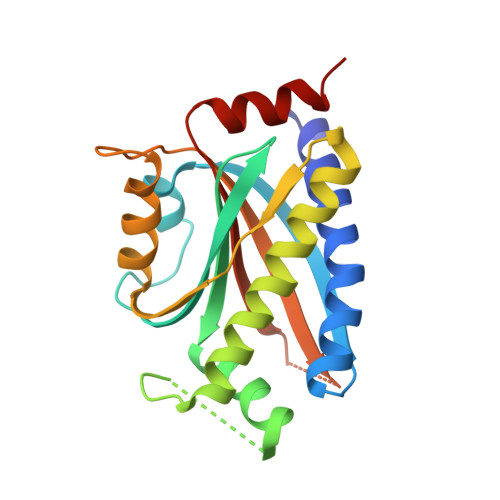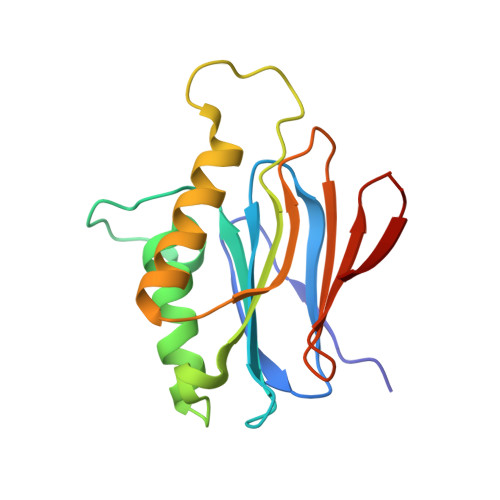A receptor-modifying deamidase in complex with a signaling phosphatase reveals reciprocal regulation.
Chao, X., Muff, T.J., Park, S.Y., Zhang, S., Pollard, A.M., Ordal, G.W., Bilwes, A.M., Crane, B.R.(2006) Cell 124: 561-571
- PubMed: 16469702
- DOI: https://doi.org/10.1016/j.cell.2005.11.046
- Primary Citation of Related Structures:
2F9Z - PubMed Abstract:
Signal transduction underlying bacterial chemotaxis involves excitatory phosphorylation and feedback control through deamidation and methylation of sensory receptors. The structure of a complex between the signal-terminating phosphatase, CheC, and the receptor-modifying deamidase, CheD, reveals how CheC mimics receptor substrates to inhibit CheD and how CheD stimulates CheC phosphatase activity. CheD resembles other cysteine deamidases from bacterial pathogens that inactivate host Rho-GTPases. CheD not only deamidates receptor glutamine residues contained within a conserved structural motif but also hydrolyzes glutamyl-methyl-esters at select regulatory positions. Substituting Gln into the receptor motif of CheC turns the inhibitor into a CheD substrate. Phospho-CheY, the intracellular signal and CheC target, stabilizes the CheC:CheD complex and reduces availability of CheD. A point mutation that dissociates CheC from CheD impairs chemotaxis in vivo. Thus, CheC incorporates an element of an upstream receptor to influence both its own effect on receptor output and that of its binding partner, CheD.
Organizational Affiliation:
Department of Chemistry and Chemical Biology, Cornell University, Ithaca, NY 14853, USA.















